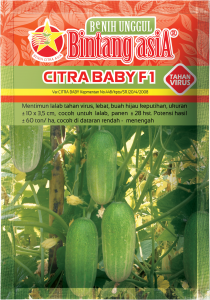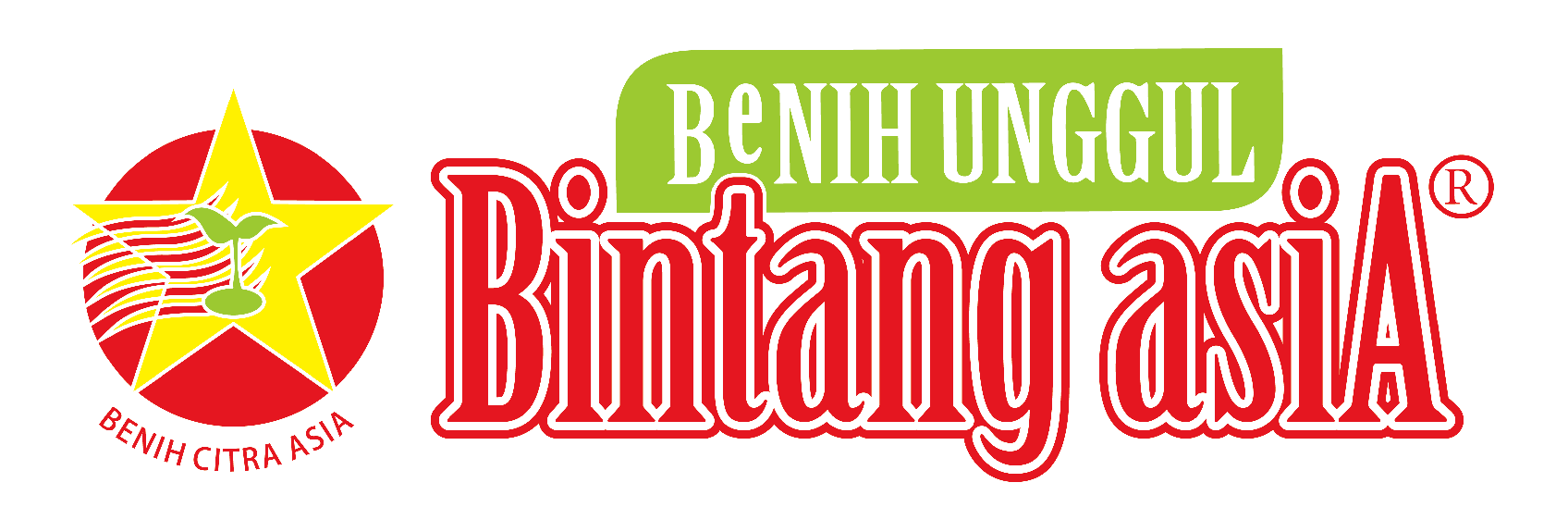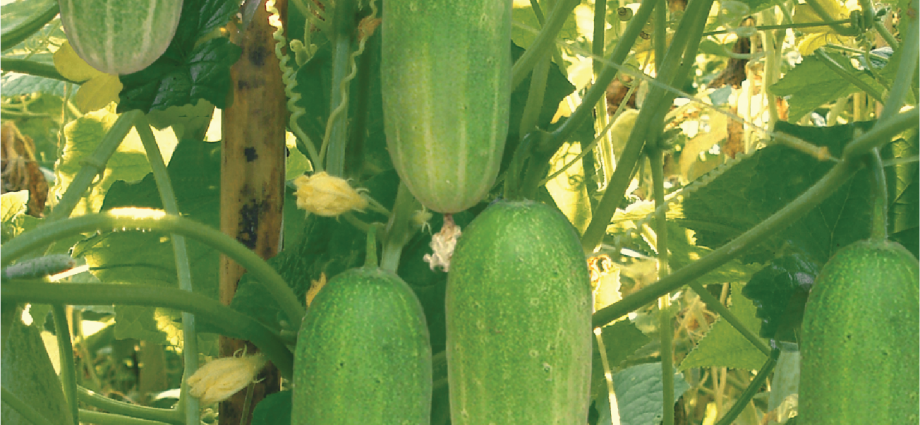How to Cultivate Cucumbers in Rice Fields
Cucumber is a vegetable commodity that is consumed by many people. That is why many farmers cultivate it, apart from the fact that cucumbers are fast-harvesting crops, so the turnover of capital is fast.
Cucumber plants can also adapt from the lowlands to the highlands and from dry to wet land. However, cultivating cucumber plants is not without problems. At any time, pests and diseases can come to attack.

This practical guide on how to grow cucumbers for beginners contains everything from seed selection techniques, planting planning, land preparation, maintenance techniques, and harvesting.
Check out the full description of how to plant and cultivate cucumbers in the following rice fields.
1.Planting Planning
Location selection
Cucumber plants are extremely adaptable; they can grow from the lowlands to the highlands, in paddy fields and on dry land, and require no special care.
However, to be able to grow and produce optimally, cucumber plants have the following growing requirements:
Loose soil, rich in humus, not flooded, with a pH of 6-7.
Its growth requires a dry climate with an air temperature of 21-27 °C.
The air humidity is less than 80%.
Enough water
It is not an endemic area for fusarium wilt and bacterial wilt.
Cropping pattern configuration
Setting cropping patterns in cucumber cultivation aims to break the life cycle of pests and diseases in a certain land area or area.
The arrangement of cropping patterns for cucumber cultivation in the lowlands and highlands for one year is as follows.
Cropping system settings
Cucumber planting systems are generally carried out in monoculture. This is done because the canopy of the cucumber plant is thick enough that if it is intercropped with other plants, it will compete for sunlight.
In addition, pests that commonly attack cucumber plants, such as armyworms, span caterpillars, and whiteflies, are polyphagous, so it is feared that they will also attack intercropping plants.
selection of varieties and seeds.
The selection of varieties must consider the following factors:
market demand,
high productivity.
tolerant of pest attacks, and
according to the local ecosystem.
Some of the recommended cucumber varieties are Citra Baby F1, Semi F1, Ronaldo F1, Labana F1, Komandan F1, Lalap Hijau F1, Makka F1, Wuku, Julia F1, Gantina F1, Monas F1, Camri F1, Benlebat, Sukoi.
Apart from certification, the following factors must be taken into account:
Cucumber plants require a lot of water during their growth period, but are very susceptible to rainfall and high humidity.
Therefore, the timing of cucumber planting is very important. This is related to the availability of water, rainfall, and attacks by pests and diseases. The exact planting time may vary by location, type of soil, and variety.
On dry land or moor with good irrigation, the right time for planting is at the beginning of the rainy season, while for rice fields with technical irrigation, it is at the end of the rainy season.
In addition to these factors, market demand must also be considered in determining the cucumber planting time.
2.Land Processing
Land preparation aims to create a loose tillage layer, remove weeds or crop residues, remove toxins, and kill pests in the soil.
Therefore, the time required from the initial tillage until it is ready for planting is at least 1 month, so that the pathogens and pest cocoons in the soil die in the sun.
3. Liming
Plants will grow and produce optimally in soils that have a certain pH range. Because soil pH is related to the availability of nutrients like plants,
Cucumber plants grow well in soils that have a pH in the range of 6-7. If the soil pH is not suitable, then plant growth will be less effective, so it is vulnerable to OPT (Plant Disturbing Organisms) attacks.
If the soil pH is less than 6, liming is carried out using dolomite or kaptan (agricultural lime), which is carried out 1 month before planting, namely at the time of the first tillage.
4. Mulching
The use of mulch aims to maintain soil structure so that it remains loose, maintain soil moisture and temperature, reduce nutrient leaching, and suppress weed growth.
If viewed from the point of plant protection, The use of mulch aims to suppress the development of pests. Pests like fruit caterpillars, armyworms, and fruit flies cocoon in the soil.
With the use of mulch, pests that want to cocoon are blocked by mulch. In the lowlands, rice straw mulch with a thickness of 5 cm is used, while in the medium and highlands, black and silver plastic mulch are used.
5. Soil Treatment
Soil treatment aims to suppress the attack of pests in the soil, such as orong orong, uret, fusarium wilt disease, and bacterial wilt disease.
The types of soil treatment in cucumber cultivation are as follows.
As much as 15 kg/ha was sprinkled into the planting hole 7 days before planting to suppress the population of uret and orong-orong.
In areas where bacterial wilt is endemic, oxytetracycline bactericide (formulation concentration of 1 ml/liter) is poured into the planting hole as much as 200 ml per planting hole 1 day before planting.
In areas endemic to fusarium wilt disease, the fungicide Benomil 50 WP (2 g/liter) was poured into the planting hole at a dose of 200 ml per planting hole, 1 day before planting.
6. Microclimate Modification
Close spacing and gardens full of weeds will create favorable conditions for pest development.
Therefore, to create a microclimate around plants that are not suitable for pests, it is done by adjusting the spacing and keeping the garden clean. In the rainy season, the spacing is wider than in the dry season.
The recommended spacing of cucumbers in the rainy season is 40 cm x 70 cm, while in the dry season it is 30 cm x 70 cm.
7. Seeding
Treatment of seeds or seedlings
There are several types of pests carried by seeds or seedlings. Therefore, in order to obtain healthy cucumber seeds, it is necessary to treat the seeds in the following way.
To prevent seed-borne diseases, before sowing, cucumber seeds are soaked in lukewarm water or in a solution of the fungicide Propamocarb hydrochloride (1 mI/liter) for half an hour.
To prevent whitefly attacks, cucumber seedlings aged 2 and 4 weeks after sowing were watered with the insecticide Tiamethoxam (0.5 mI/liter) at a dose of 50 ml per plant.
Seeding stages
Before planting, the cucumber seeds should be sown first, and the seeding place is in a screen house or in a nursery hood.
The stages of seeding cucumber seeds are as follows:
The seedling media consisted of a mixture of manure and fine soil in a ratio of 1:1.
The seedling medium was steamed using hot steam for 4 hours to kill pests in the soil.
Sowing can be done in a nursery tray, in a plastic bag or in a banana leaf.
Cucumber seeds (1 seed per hole) were immersed in the seedling medium to a depth of 0.5 cm.
Fine soil or husk charcoal is sprinkled on the seedling media and then watered and covered with wet tissue paper, plastic, or banana leaves for 2-3 days until the seeds germinate. Watering is done moderately every morning and is kept so that the seedling media is not dry or too humid.
NPK 16:16:16 (2 g/liter) fertilizer was sprinkled on seedlings that had 2 leaves up to 4 weeks of age with 1 week intervals.
If seeding is done using a plastic bag or banana leaf roof, thinning is carried out by sliding the plastic bag or banana leaf roof once a week to prevent etiolation.
To prevent snail pests from attacking, 6 GR Metaldehyde toxic bait at a dose of 1 g/m2 was placed around the nursery.
To prevent disease attacks, the fungicide Chlorotalonil (2 g/liter) was sprayed at intervals of 4 days.
Before the seedlings are transferred to the field, the seedlings are strengthened by opening the nursery walls or removing the seedlings from the seeding cover for 1-2 days so that the seedlings receive direct sunlight.
8. Fertilization
Cucumber fertilization must be carried out in a balanced manner, meaning that the dose and time of administration of N, P205, and K20 elements must be in accordance with the needs of the plant because an excess or deficiency of one nutrient will inhibit the absorption of other nutrients.
In conjunction with a pest attack Excess elements, especially N, will cause pests to be attracted to plants with high nitrogen content.
Excess N, especially NH4, causes plant cells to enlarge so that the cell walls become thinner. As a result, pathogens more easily penetrate the plant cells.
For cucumber plants, the nutrient requirements are N 160 kg/ha, P205 72 kg/ha, and K20 120 kg/ha.
Basic fertilizer
Basic fertilizer consists of manure (chicken, cow, or horse manure), N (urea, ZA, or NPK), P205 (TSP, SP36, or NPK), and K20 (KCI, ZK, or NPK).
The fertilizer mixture is placed in each planting hole.
Follow-up fertilizer
The supplementary fertilizer given is N (nitrogen) fertilizer, which comes from a single fertilizer such as Urea or ZA.
Follow-up fertilizer is placed in a 5-7 cm deep hole at a distance of 10 cm from the base of the stem, then the fertilizer is covered with soil.
9. How to Grow Cucumbers.
Cucumbers should be planted in the afternoon around 15.00-16.00. This is done to avoid plant death due to the influence of high temperatures.
Planting is done by removing cucumber seedlings from the sowing residue or roof, and then planting them in the planting hole that has been prepared.
In one hole, plant a seedling, then water. Plants that die due to pests or diseases must be replaced immediately.
10. Setup of OPT Traps
The installation of OPT traps serves to reduce the population of pests. OPT traps are used as follows.
The yellow sticky trap serves to trap trip mites, aphids, fleas, and leaf lice. The installation of the trap is done at the time of planting. Yellow adhesive traps (as many as 50-100 pieces per hectare) are installed 10–25 cm above the plant canopy.
Methyl eugenol traps work to trap fruit flies. The installation is done when the cucumber plants begin to flower. Methyl eugenol traps (as many as 50-100 pieces per hectare) are installed 10–25 cm above the plant canopy.
11.Installation of bamboo studs
The bamboo turus, which functions as a plant support, is installed when the plants are 4-5 days after planting.
Cucumber plant stems are tied to a bamboo pole using raffia rope. Binding is done every week following the development of plant height.
12. Plant Maintenance
Sprinkle
Start planting until the cucumber plants are 2-3 weeks after planting, watering every day. After 3 weeks, watering is done as needed, generally every 2-5 days.
Weeding
Weeds and weeds are hosts for several types of pests. Therefore, keeping the garden clean is a must.
Weeding is done before the first follow-up fertilization and then repeated every 2 weeks.
Cucumber plantations at a radius of 50 m must be free of ‘babadotan’ or ‘wedusan’ grass (Ageratum conyzoides PDF), which is the host of whitefly pests (Bemisia tabaCI), vectors of gemini yellow virus disease.
13.Cucumber Harvest and Fresh Handling
Cucumbers can begin to be harvested at the age of 35 days after planting. The characteristics of cucumbers that are ready to be harvested are that they are fully ripe with a uniform color from the base to the tip of the fruit.
Cucumbers lose water easily, so they get wrinkled easily. Therefore, after harvesting cucumbers, they must be placed in a shady place so they are not exposed to direct sunlight.
For short-distance transportation, cucumbers are packed in plastic bags with a capacity of 5–10 kg, while for long distances, cucumbers are packed in plastic containers.



I have read your article carefully and I agree with you very much. This has provided a great help for my thesis writing, and I will seriously improve it. However, I don’t know much about a certain place. Can you help me?
I like reading a post that can make people think. Also, thank you for allowing me to comment!
I don’t think the title of your article matches the content lol. Just kidding, mainly because I had some doubts after reading the article.
Your point of view caught my eye and was very interesting. Thanks. I have a question for you.
I am a website designer. Recently, I am designing a website template about gate.io. The boss’s requirements are very strange, which makes me very difficult. I have consulted many websites, and later I discovered your blog, which is the style I hope to need. thank you very much. Would you allow me to use your blog style as a reference? thank you!
Your article helped me a lot, is there any more related content? Thanks!
I appreciate, cause I discovered exactly what I used to be taking a look for. You have ended my 4 day long hunt! God Bless you man. Have a great day. Bye
I don’t think the title of your article matches the content lol. Just kidding, mainly because I had some doubts after reading the article.
This post is a great reference.
I don’t think the title of your article matches the content lol. Just kidding, mainly because I had some doubts after reading the article.
Thank you for your sharing. I am worried that I lack creative ideas. It is your article that makes me full of hope. Thank you. But, I have a question, can you help me?
Thanks for your exciting article. One other problem is that mesothelioma cancer is generally brought on by the inhalation of dust from asbestos fiber, which is a very toxic material. It truly is commonly viewed among workers in the construction industry who may have long contact with asbestos. It’s also caused by residing in asbestos insulated buildings for a long time of time, Genetics plays an important role, and some individuals are more vulnerable towards the risk than others.
Thank you for writing this article. I appreciate the subject too.
Your point of view caught my eye and was very interesting. Thanks. I have a question for you.
Your articles are extremely helpful to me. Please provide more information!